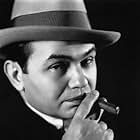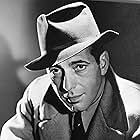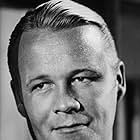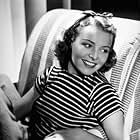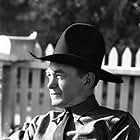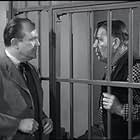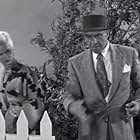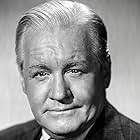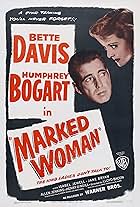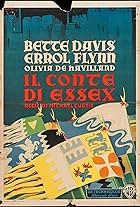VALUTAZIONE IMDb
7,2/10
4027
LA TUA VALUTAZIONE
Aggiungi una trama nella tua linguaFight promoter Nick Donati grooms a bellhop as a future champ, but has second thoughts after the now-named Kid Galahad falls for his sister.Fight promoter Nick Donati grooms a bellhop as a future champ, but has second thoughts after the now-named Kid Galahad falls for his sister.Fight promoter Nick Donati grooms a bellhop as a future champ, but has second thoughts after the now-named Kid Galahad falls for his sister.
- Premi
- 1 vittoria e 1 candidatura
Soledad Jiménez
- Mrs. Donati
- (as Soledad Jiminez)
Trama
Lo sapevi?
- QuizWhile Bette Davis praised Edward G. Robinson as a performer and as a person, she was repulsed by having to kiss him.
- BlooperWhen Turkey confronts Fluff, Ward and Silver in front of the New York hotel, he is seen in long shot leaning against the building, then begins to advance toward the trio. In the medium shot, he once again is leaning against the wall and then again starts to move toward the three of them.
- Citazioni
Louise 'Fluff' Phillips: It seems I'm always ringside at the first fight... and the last.
- ConnessioniFeatured in Hollywood and the Stars: The Man Called Bogart (1963)
- Colonne sonoreThe Moon Is in Tears Tonight
(1937) (uncredited)
Music by M.K. Jerome
Lyrics by Jack Scholl
Performed by Bette Davis, voice dubbed
Recensione in evidenza
Director Michael Curtiz was known for manly films like The Adventures Of Robin Hood, Captain Blood, Angles With Dirty Faces but he also directed women's pictures like Mildred Pierce and the musical Yankee Doodle Dandy. This is the first of six films where Curtiz worked with Humphrey Bogart, his most famous is Casablanca.
The powerhouse triumvirate of talent almost overpowers the story. Kid Galahad stars Edward G. Robinson who is wonderful as the headstrong fight promoter, Bette Davis provides romantic chemistry as his compassionate girlfriend and Humphrey Bogart (still early in his career) plays a rival boxing manager that uses gangster tactics to get his own way.
Bette Davis had just returned to Warner Bros. after attempting to walk out on her contract in 1935 when she made Kid Galahad, a hybrid gangster-boxing film in 1937. Although far from the types of vehicles that would make her the studio's top box office star in a few years, it served both her and the studio well. Warner's got her name on the marquee to draw her growing legions of female fans to an otherwise male- oriented film, while she got the chance to appeal to a more masculine audience than usual. The result was a hit for her that would remain a classic boxing flick for decades.
Francis Wallace's novel, which had been serialized in The Saturday Evening Post, was a natural for Warner Bros. with its mix of boxing action and gangland corruption. The studio had the perfect actor for the role of tough fight manager Nick Donati in Edward G. Robinson, who had been a star there since his triumph in Little Caesar (1931). His gangland rival was a good role for supporting gangster star Humphrey Bogart. And the part of the young bellhop who belts his way to victory when the reigning champ puts the moves on Robinson's girlfriend (Davis), would be ideal for showcasing screen newcomer Wayne Morris. Davis was happy to accept the secondhand role, particularly as she was still waiting for the studio to develop a script for her next big vehicle, Jezebel (1938). She was also eager to work with Robinson, but after one day of shooting, he went to production chief Hal Wallis to demand she be replaced. In his opinion, she was little more than an uncontrolled, although gifted amateur. He would repeat that assessment in his memoirs, arguing that she had left the stage for Hollywood before developing control of her craft. Davis never spoke ill of Robinson, though she observed wryly in later years that he had stopped shooting during a death scene to complain to director Michael Curtiz that she and co-star Jane Bryan were drowning out his final speeches with their sobbing. The stars would never work together again.
One lasting relationship that came out of the film was between Davis and Irving Rapper, who would direct her biggest hit, Now, Voyager (1942). Rapper had just been hired as the film's dialogue director when, on his first day, he watched Curtiz staging a fight scene between Davis and Robinson. When Davis failed to respond properly to a shove from Robinson, Curtiz yelled, "That's not the way to fight, you damn bum!" Davis asked him to show her what he wanted, so Curtiz took her place in the scene. Robinson didn't want to throw the director around, afraid the larger man would hurt him, but he got into things when Curtiz started playing the scene as a Davis imitation. When Robinson pushed the director, he banged into a table and bounced back, almost knocking over his leading man. Davis got the point and stepped into the scene. But Robinson forgot to adjust the shove for his much lighter leading lady, and she went flying across the stage, landing in Rapper's lap. "My God, who are you?" she asked. When Rapper introduced himself as the film's new dialogue director, she quipped, "Thank God you caught the ball!" The boxing scenes were as real and brutal as any filmed previously. After the scene in which Morris knocks out a boxer in the ring, Curtiz screamed that it looked fake and demanded a re-take. But they had to wait for the actor to regain consciousness; he really was down for the count. When Kid Galahad came out, the author Wallace was so impressed he sent Morris a telegram, "Thank you for bringing our boy over the border of fiction into reality."
Kid Galahad was a hit with critics and audiences alike, with many of them praising Robinson and Davis for their professionalism and singling out Morris as a bright new talent. Ultimately, the studio would fail to come up with suitable follow-ups for the young actor, who would fade into supporting roles his best being in Stanley Kubrick's Paths Of Glory.
Many critics also hailed the film as the best boxing picture to date. Please notice the fine character work of actors: Harry Carey as the trainer, Jane Bryan as Robinson's sister, William Haade as the Champ and Joe Cunningham as the reporter.
Finally when The Mirisch Bros. bought the story as a vehicle for Elvis Presley (with Gig Young and Lola Albright in the other leads), Warner's re-titled Kid Galahad for television prints as The Battling Bellhop to avoid confusion with the Elvis re-make which was now a comedy-musical-boxing-drama.
The powerhouse triumvirate of talent almost overpowers the story. Kid Galahad stars Edward G. Robinson who is wonderful as the headstrong fight promoter, Bette Davis provides romantic chemistry as his compassionate girlfriend and Humphrey Bogart (still early in his career) plays a rival boxing manager that uses gangster tactics to get his own way.
Bette Davis had just returned to Warner Bros. after attempting to walk out on her contract in 1935 when she made Kid Galahad, a hybrid gangster-boxing film in 1937. Although far from the types of vehicles that would make her the studio's top box office star in a few years, it served both her and the studio well. Warner's got her name on the marquee to draw her growing legions of female fans to an otherwise male- oriented film, while she got the chance to appeal to a more masculine audience than usual. The result was a hit for her that would remain a classic boxing flick for decades.
Francis Wallace's novel, which had been serialized in The Saturday Evening Post, was a natural for Warner Bros. with its mix of boxing action and gangland corruption. The studio had the perfect actor for the role of tough fight manager Nick Donati in Edward G. Robinson, who had been a star there since his triumph in Little Caesar (1931). His gangland rival was a good role for supporting gangster star Humphrey Bogart. And the part of the young bellhop who belts his way to victory when the reigning champ puts the moves on Robinson's girlfriend (Davis), would be ideal for showcasing screen newcomer Wayne Morris. Davis was happy to accept the secondhand role, particularly as she was still waiting for the studio to develop a script for her next big vehicle, Jezebel (1938). She was also eager to work with Robinson, but after one day of shooting, he went to production chief Hal Wallis to demand she be replaced. In his opinion, she was little more than an uncontrolled, although gifted amateur. He would repeat that assessment in his memoirs, arguing that she had left the stage for Hollywood before developing control of her craft. Davis never spoke ill of Robinson, though she observed wryly in later years that he had stopped shooting during a death scene to complain to director Michael Curtiz that she and co-star Jane Bryan were drowning out his final speeches with their sobbing. The stars would never work together again.
One lasting relationship that came out of the film was between Davis and Irving Rapper, who would direct her biggest hit, Now, Voyager (1942). Rapper had just been hired as the film's dialogue director when, on his first day, he watched Curtiz staging a fight scene between Davis and Robinson. When Davis failed to respond properly to a shove from Robinson, Curtiz yelled, "That's not the way to fight, you damn bum!" Davis asked him to show her what he wanted, so Curtiz took her place in the scene. Robinson didn't want to throw the director around, afraid the larger man would hurt him, but he got into things when Curtiz started playing the scene as a Davis imitation. When Robinson pushed the director, he banged into a table and bounced back, almost knocking over his leading man. Davis got the point and stepped into the scene. But Robinson forgot to adjust the shove for his much lighter leading lady, and she went flying across the stage, landing in Rapper's lap. "My God, who are you?" she asked. When Rapper introduced himself as the film's new dialogue director, she quipped, "Thank God you caught the ball!" The boxing scenes were as real and brutal as any filmed previously. After the scene in which Morris knocks out a boxer in the ring, Curtiz screamed that it looked fake and demanded a re-take. But they had to wait for the actor to regain consciousness; he really was down for the count. When Kid Galahad came out, the author Wallace was so impressed he sent Morris a telegram, "Thank you for bringing our boy over the border of fiction into reality."
Kid Galahad was a hit with critics and audiences alike, with many of them praising Robinson and Davis for their professionalism and singling out Morris as a bright new talent. Ultimately, the studio would fail to come up with suitable follow-ups for the young actor, who would fade into supporting roles his best being in Stanley Kubrick's Paths Of Glory.
Many critics also hailed the film as the best boxing picture to date. Please notice the fine character work of actors: Harry Carey as the trainer, Jane Bryan as Robinson's sister, William Haade as the Champ and Joe Cunningham as the reporter.
Finally when The Mirisch Bros. bought the story as a vehicle for Elvis Presley (with Gig Young and Lola Albright in the other leads), Warner's re-titled Kid Galahad for television prints as The Battling Bellhop to avoid confusion with the Elvis re-make which was now a comedy-musical-boxing-drama.
- Larry41OnEbay-2
- 20 giu 2011
- Permalink
I più visti
Accedi per valutare e creare un elenco di titoli salvati per ottenere consigli personalizzati
- How long is Kid Galahad?Powered by Alexa
Dettagli
- Data di uscita
- Paese di origine
- Lingue
- Celebre anche come
- Kid Galahad
- Luoghi delle riprese
- Azienda produttrice
- Vedi altri crediti dell’azienda su IMDbPro
- Tempo di esecuzione1 ora 42 minuti
- Colore
- Mix di suoni
- Proporzioni
- 1.37 : 1
Contribuisci a questa pagina
Suggerisci una modifica o aggiungi i contenuti mancanti

Divario superiore
By what name was L'uomo di bronzo (1937) officially released in India in English?
Rispondi








